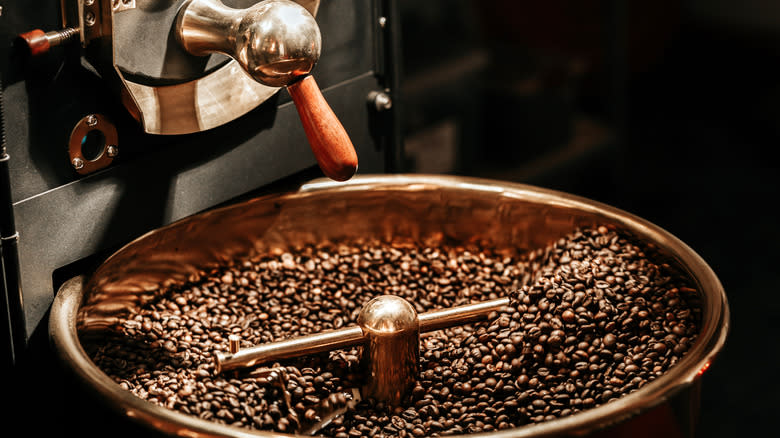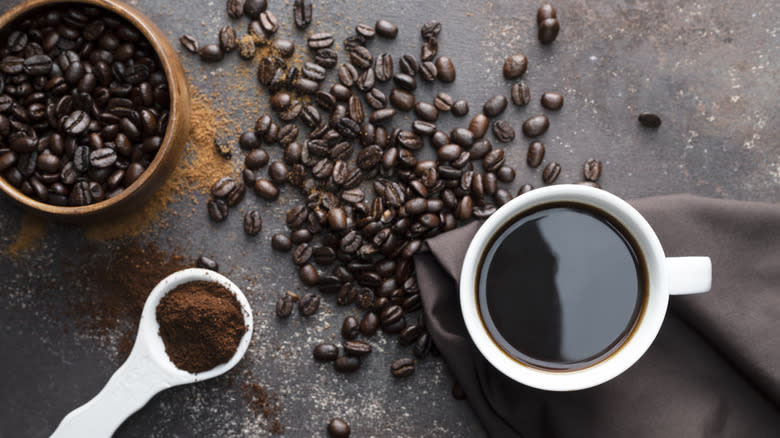What Is French Roast Coffee And What Does It Taste Like?

Coffee is a complex beverage. From the bean sourcing to the preparation of the brew, lots of work goes into an aromatic cup. And a process that gets special emphasis is roasting. This heating process is crucial to unlocking the bean's aroma and flavor, turning green beans into an extraordinary brew.
As with other aspects of coffee processing, the roasting stage can take on a variety of possibilities. The beans are heated to over a dozen different possible degrees, each of which exhibits its own unique attribute. And few roasts get any bolder than the French roast, a style heated for a long and hot duration. This roast type brings out the most intense, dark flavors present in coffee. Tartness is no longer present, instead replaced with smoky, sweet, and bitter notes. On occasion, the coffee may even exhibit charred flavors. While it won't convey the intricacies of the coffee's origin, it'll nonetheless yield a deliciously brewed cup. Plus, its bold, strong flavor makes especially tasty drinks with milk and sugar additions.
Read more: 26 Coffee Hacks You Need To Know For A Better Cup
French Roast Is A Dark And Bold Coffee Style

French-style roasting came about in the 19th century when European cafes favored darker, more intensely flavored brews. Since the beans are heated for the longest time at the highest temperature, the original coffee quality is less important. As a result, brews are more standardized, especially with the advent of espresso drinks. Hence, this style is sometimes referred to by the collective name of espresso, or simply dark roast. However, note that French roast coffee is a specific term on the darker side of the roasting spectrum, with only Italian and Spanish roasts considered darker.
French roast coffee has an accumulation of oil visible on the exterior, caused by a process called the second crack. Such a characteristic is unique to roasts of this dark intensity, which, along with the specific temperature, aids roasters in stopping the heating right before the beans are too burnt. The resultant coffee takes on a lighter texture, complemented by a strong, smoky, and less complex taste. Its straightforward flavor profile is ideal for more elaborate drinks, as it pairs well with tastes like chocolate in a mocha or with plenty of sugar in a Vietnamese iced coffee.
Read the original article on Tasting Table.

